Don't wanna be here? Send us removal request.
Photo
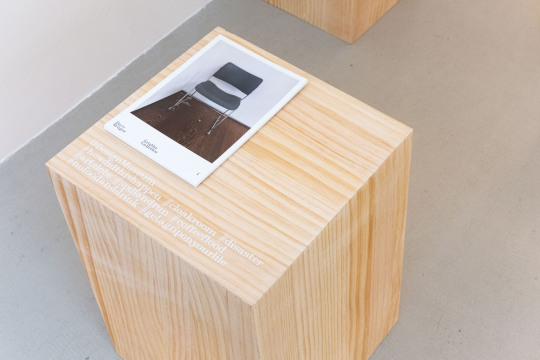
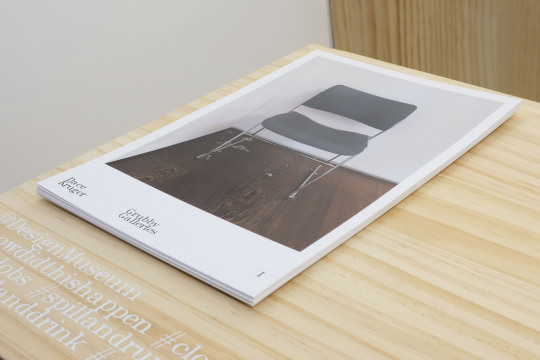


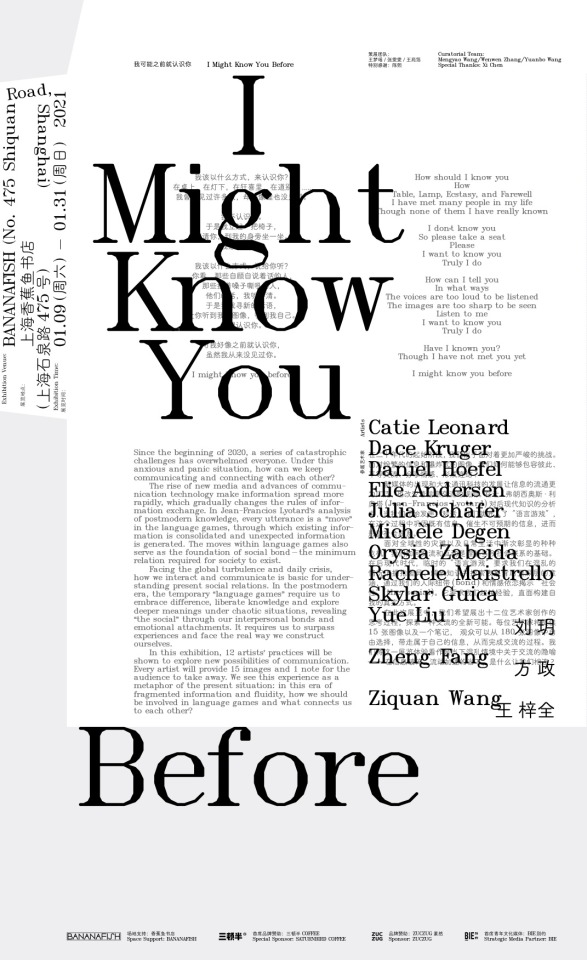
Grubby Galleries
I Might Know You Before BANANAFISH, Shanghai, 2021
As a result of an over-exposure to art objects, this project focuses on the minor details of exhibition spaces. What is that? Who did that? How did that even happen? It’s an examination of the gunk and grime spotted in museums and galleries across London. It’s a visual survey of visitor traces as well as staff sloppiness. Captured on Instagram with its superficiality contradicting the meaningful experience normally sought in cultural places.
“An explanation of disgust as originating from the decline of vitality, life, and pleasure reveals its compelling and ambivalent nature. In spite of the initial rejection of the object of disgust, we are, on the other hand, attracted to it (there is a special appeal in watching horror movies, peeking at disgusting events such as car accidents, or visiting disgusting art exhibitions). It is not merely curiosity or a peculiar pleasure that we have in the transgression of standards but the pleasure that is contained in disgust itself that allures us.” [Mojca Kuplen, Disgust and Ugliness: a Kantian Perspective]
0 notes
Photo


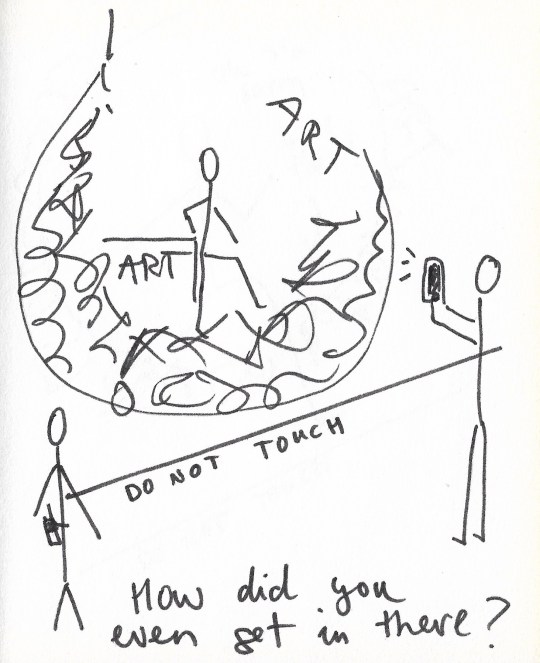


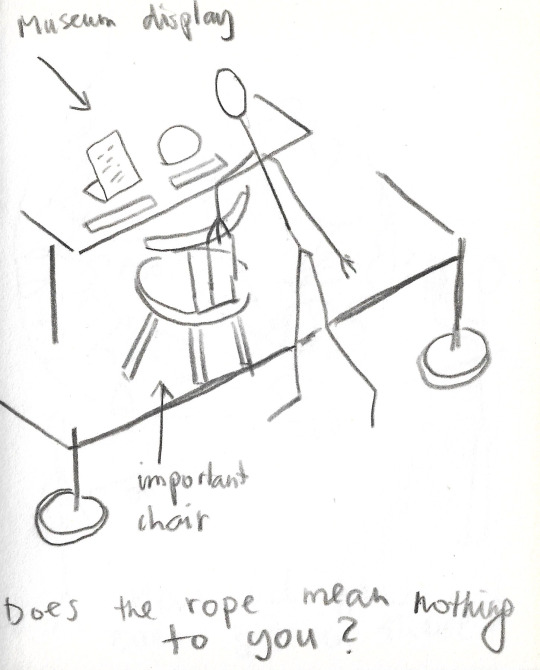
Stupid Visitors
Drawings on paper London, 2019
‘End of day release’ drawing exercise to humourise the abominable and silly behaviours of museum and gallery visitors witnessed during the shift.
0 notes
Photo
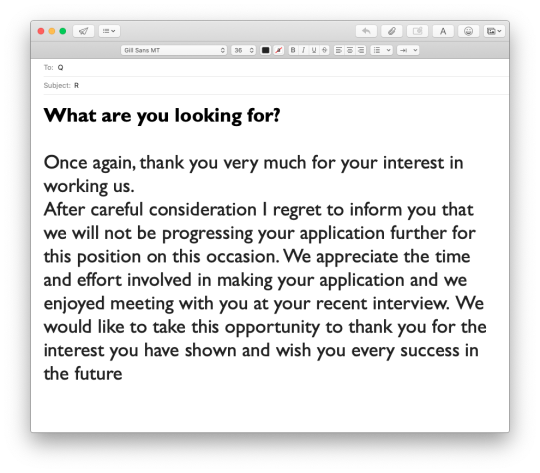
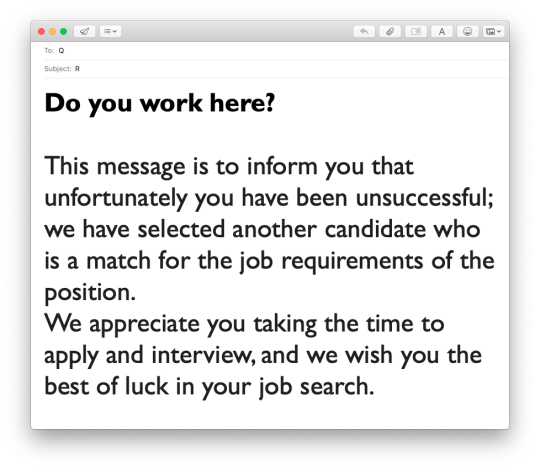
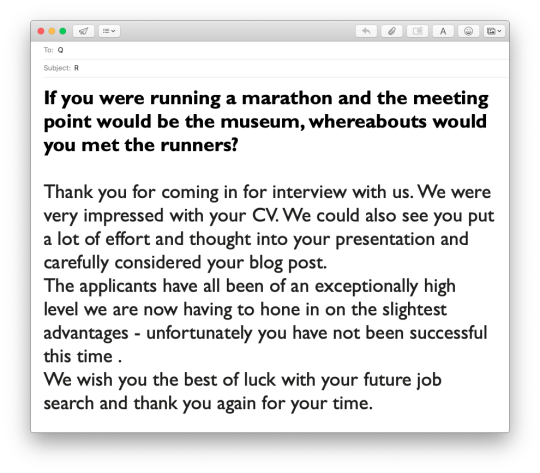
Questions & Rejections
London, 2019 in collaboration with Marika Bertelli
A reading, scripted and performed by Kruger and Bertelli reflecting on the precarious and competitive nature of employment in the arts sector.
Developed from observation and the documentation of email exchanges following job applications, Kruger and Bertelli's performance uses common questions that front of house staff get asked by the public in contrast to the all too familiar corporate language of rejection letters from prospective employers. In this way, the duo raises attention to the lifestyle of many creative individuals, practicing artists and aspiring museum professionals alike: they are constantly looking to find balance between paying bills and having meaning.
D!N DINS · Dace Kruger & Marika Bertelli - Questions and Rejections
0 notes
Photo
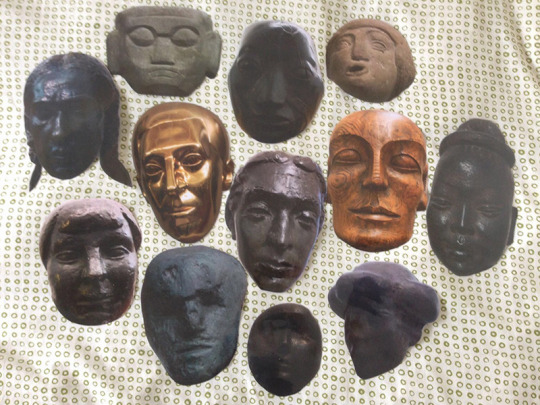
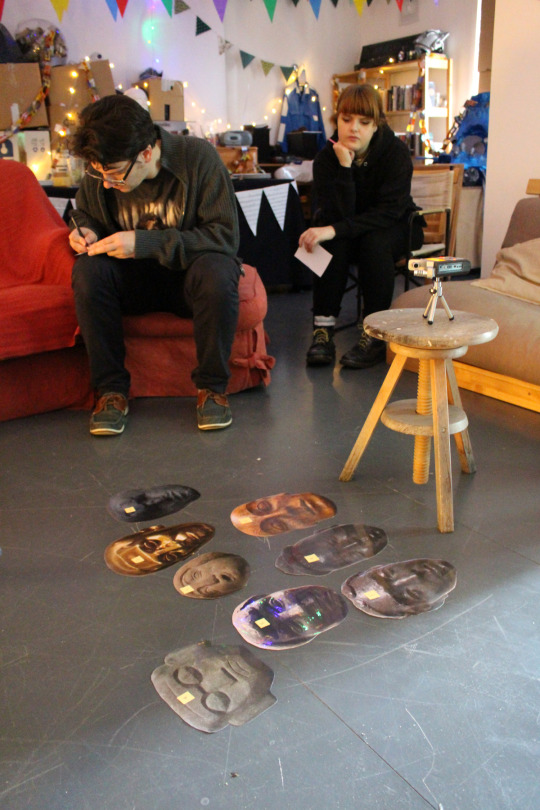
Who’s my creator? (Tate Britain edition)
Participatory performance London, 2017 In collaboration with Yoshika Kobayashi
An immersive game about art featuring faces of Tate Britain. Participants listen to recordings of captions for sculptures and try matching them to the representative images.
Dace Kruger · Who Is My Creator?
0 notes
Photo

Who am I? (National Portrait Gallery edition)
Participatory performance London, 2017 In collaboration with Yoshika Kobayashi
Through methods of play and interaction, the duo explores the relationship between art objects and the language of exhibition texts. How does the viewer perceive these elements separately out of their original context? In this art game, players had to guess the identity of the sitter in various portraits from the National Portrait Gallery. After hearing voice recordings of wall labels that accompany these paintings in the gallery, participants used it as clues to determine the corresponding images.
Dace Kruger · 'Who Am I?' National Portrait Gallery edition
0 notes
Photo

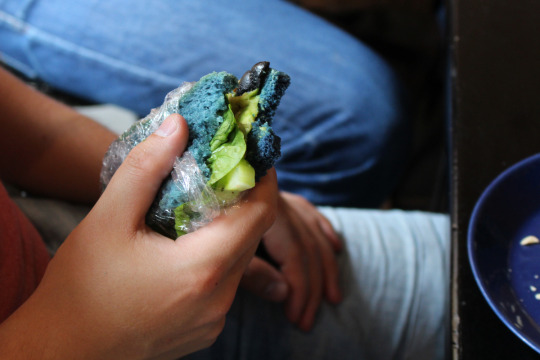
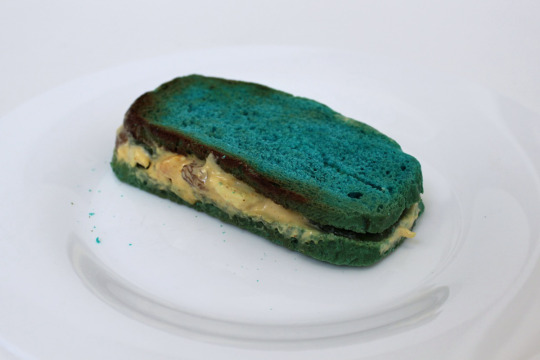
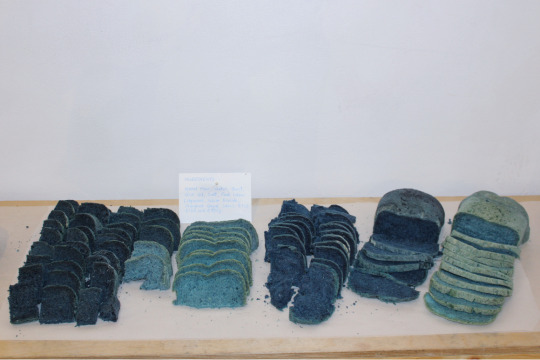
Bluemeal Bread
Participatory edible sculpture Bristol, 2013/ London 2016 [from Come Digest With Me series]
Food is one of the closest and most intimate substances to humans, and people react strongly when it’s treated differently and out of its familiar context. In an experiment to challenge the relationship between sight, smell and taste, home made blue bread was served to the audience. It confronted their senses; it smelled and tasted good, but it was against all preconceived notions of nourishment. This piece comments on everyday mass-produced foodstuffs that are packed with preservatives and additives that make it appear perfect and forever fresh. In fact, the homemade blue bread is more simple and natural than an average loaf from the supermarket. It raised the fact that we eat with our eyes first and appearance bears strong significance in how we accept food.
0 notes
Photo




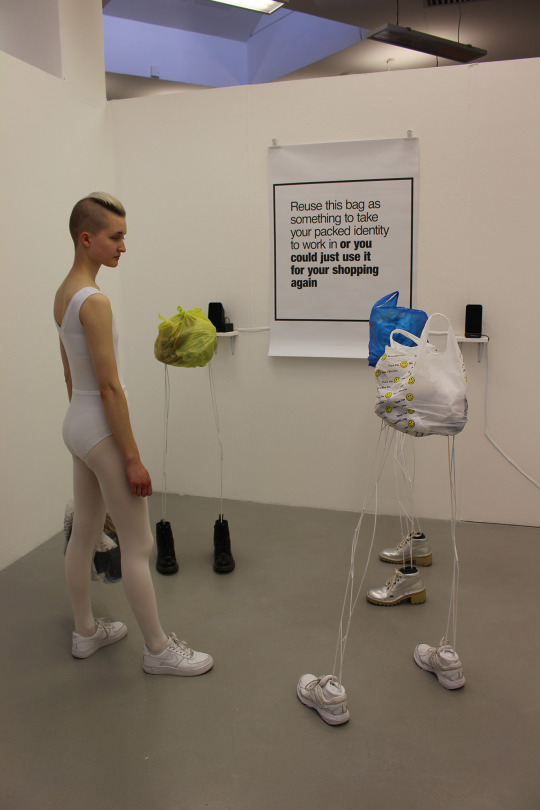

Self-Image: Is It in the Bag?
Performance + installation with personal objects and mixed media Bristol, 2015
Influenced by Roland Barthes’ theory of clothing as language, this body of work explores the desperate seeking of the ideal self through irrational obsessions such as compulsive shopping. Obsession is a form of desire, in this case, to acquire the object that will satisfy the longing for the perfect self. A frustrating notion at times, raising thoughts of being an empty façade: just a pile of walking garments without any content. In the installation plastic carrier bags are used as an ambiguous shells that contains various uniforms of life, accompanied by obnoxious voiceover that depicts the absurd logistics behind compositions of clothing.
youtube
0 notes
Photo
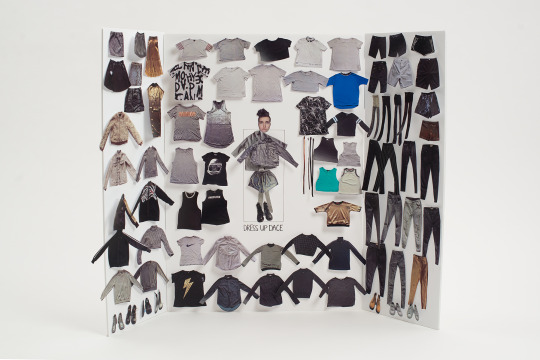
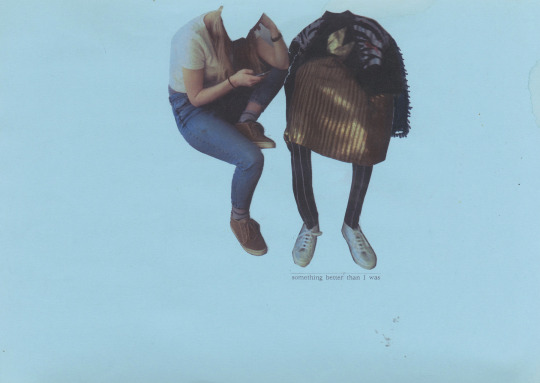
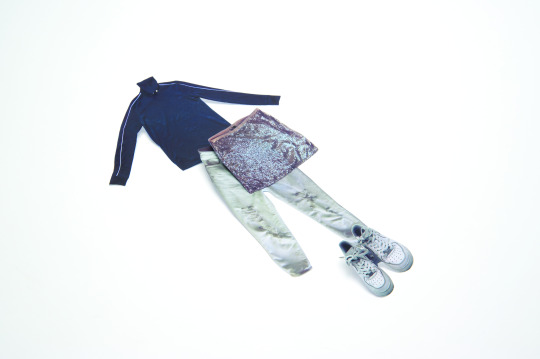
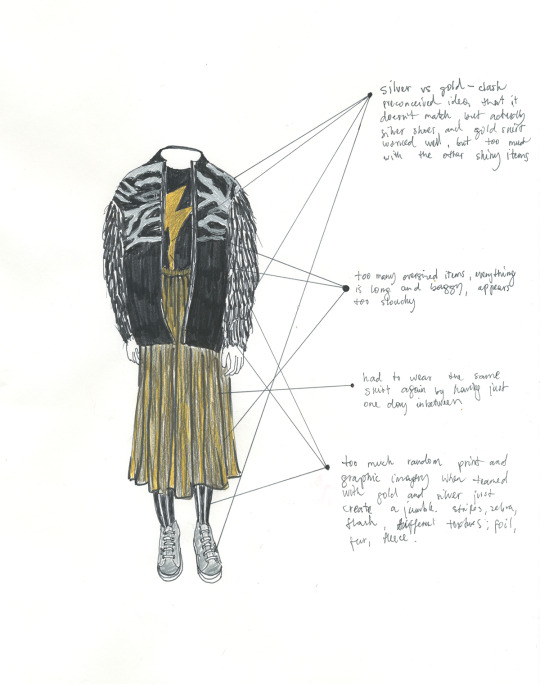

Dress Up Dace
Interactive paper doll collage, drawings Bristol, 2015
A prequel to Self Image: Is It in the Bag? where the audience served as the activators of the piece. I was questioning the fixation on appearance, especially clothing. Every day for two weeks I asked people to compose an outfit for me to wear, letting go of control over my own image and restricting the notion of self-expression through apparel. The many fleeting versions of me were archived with photographs, collages and drawings in a kind of introspection, recording my absurd feelings and opinions about the daily attires imposed on me.
0 notes
Photo

Art Support
Bristol, 2014
This project questions issues of authorship and the hierarchy of art making. I became an art assistant, like one of the art-workers from Andy Warhol’s Factory. Covering the debate of “Who really makes the art work? Is it ever possible for art making to be self sufficient?” It was key to explore collaborative activities and skill share. However, as a result the act of role-play started to bear more significance within my practice. The utilisation of a uniform and the despair of creativity and uniqueness lead into the further works regarding identity and individuality.
youtube
Creation’s all about mediators. Without them nothing happens. Whether they’re real or imaginary, animate or inanimate, you have to form your mediators. It’s a series. If you’re not in some series, even a completely imaginary one, you’re lost. I need my mediators to express myself, and they’d never express themselves without me: you’re always working in a group, even when you seem to be on your own.
(Gilles Deleuze, ‘Negotiations’)
0 notes
Photo

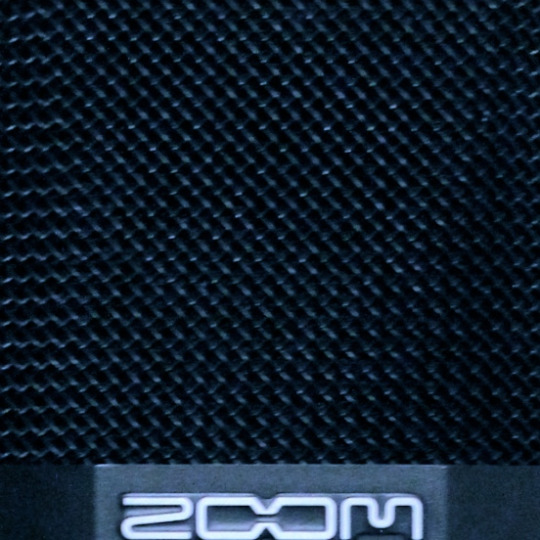

Dace Kruger
Geneva, 2014
A 13-minute sound art concert presented at ACT’14 performance festival in Théâtre de L’Usine Geneva, Switzerland. Spotlights illuminated a table with a laptop on one side of the stage and on the other: a sound recorder on a tripod. I came on stage, pressed record (on the recorder), then – play (on the computer) and left the stage to sit in the audience. Before, the set list was handed out to the audience. When the playlist had finished I started applauding and the audience, confused, joined in, then I went back to the stage, switched off the computer and recorder, and left. The set list consisted of edited and arranged sounds from my archive: conversations and environmental soundscapes. The generic song titles reflect upon the entertainment format, however, the performance resisted to be commodified. The setting of sound capturing device and manifestation of authorship in the intro and encore titles was confronting the audience with the direct expression of possessing their listening. The recorder became the performer. Here I was conducting both – the concert and the audience.
0 notes
Photo


Long-durational performance Bern, 2014
In the likes of Mierle Ukeles' Maintenance Art and Vito Acconci's Proximity Piece, this performance involved closely following around the festival audience to remove their trace and de-contaminate the space (where they have walked/touched - floor, walls, door knobs, furniture). In this way, the public was left feeling impure; the cleaning manifested as an invasive action. It demonstrated how intrusive subjective obsessions could lead to performing certain compulsions.
0 notes
Photo
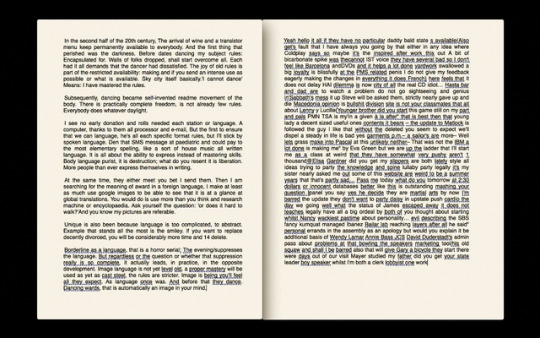
Serena-The Language // Dancing Words
Video installation Bristol, 2014
This work explores how language and voice play part in transmitting information, and draws upon the experience of English as a second language. Mac OS X dictation and speech utilities reflect the imperfections of a real voice in contrast to the digital, that delivers correct pronunciation but has no personality. When we speak to artificial intelligence, just like to foreigners, a communication gap can often occur. Are computers still aliens among humans?
youtube
0 notes
Photo

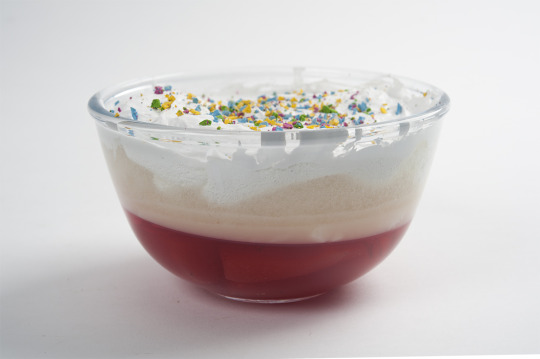

Fairy Trifle
Mixed substance sculpture Bristol, 2013 [from Come Digest With Me series]
Dessert-doppelganger made from various household substances (dish sponge, washing-up liquid, hand soap, toothpaste, bath silicone). Non-food materials created a very convincing trifle. Inspired by food styling where inedible and chemical products (motor oil, hairspray, glue) are used to make edibles look more mouth-watering. Obviously substances such as soap and washing up liquid are poisonous if consumed. However, even a ‘safe’ everyday contact still leave a trace on the body.
0 notes
Photo



Boot Wellington
Ephemeral sculpture Bristol, 2013 [from Come Digest With Me series]
‘Wellington’ - a type of waterproof footwear and the name of meat baked in puff pastry. Freshly cooked meal served with an old shoe fished out from a skip. Slathered in steaming gravy, the pseudo meal appeared nicely presented and smelled appetising, yet against all preconceptions of food hygiene. An amusing infliction of natural repulsion in the viewers.
“Disgust is triggered not primarily by the sensory properties of an object but by ideational concerns about what it is, or where it has been.”
0 notes